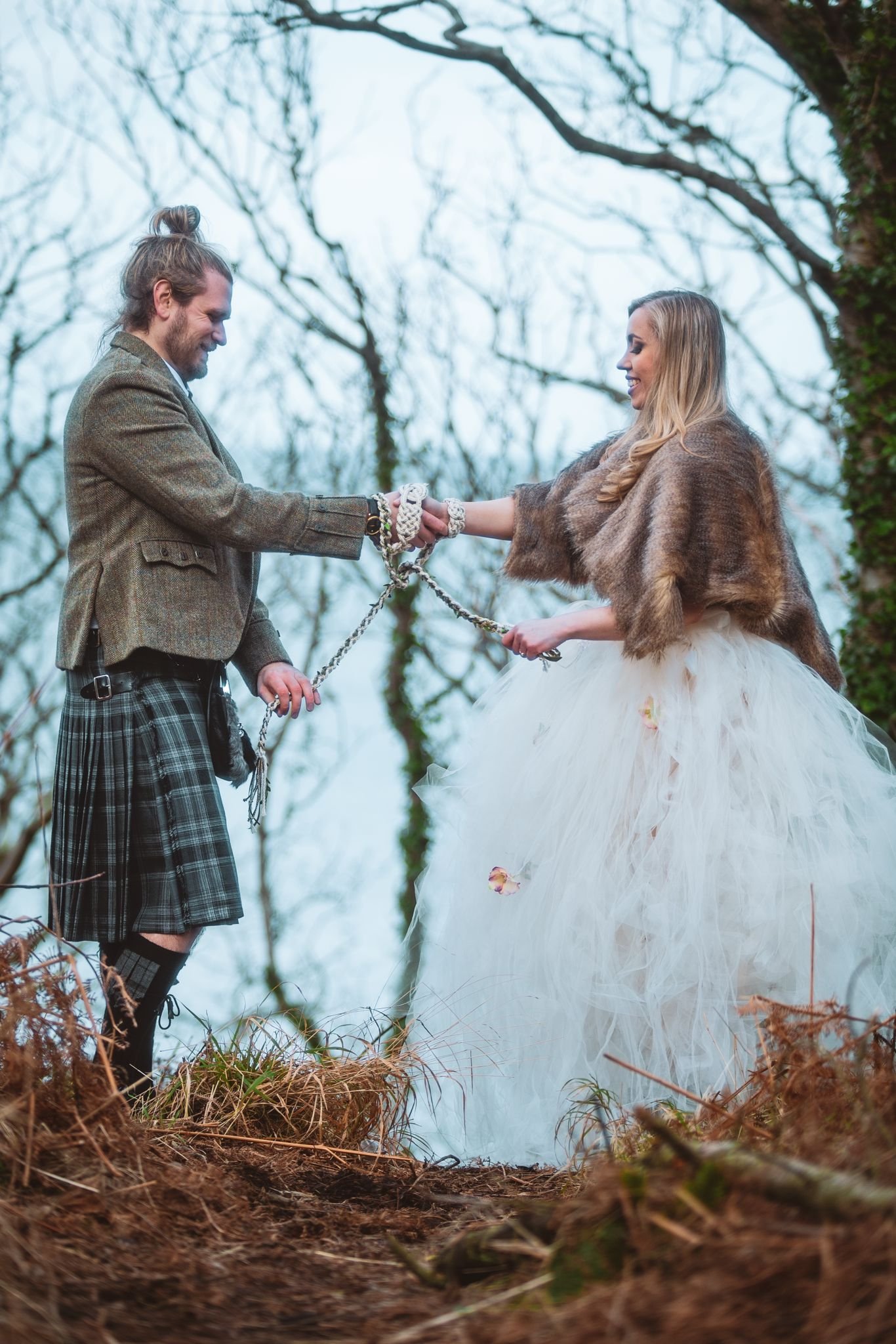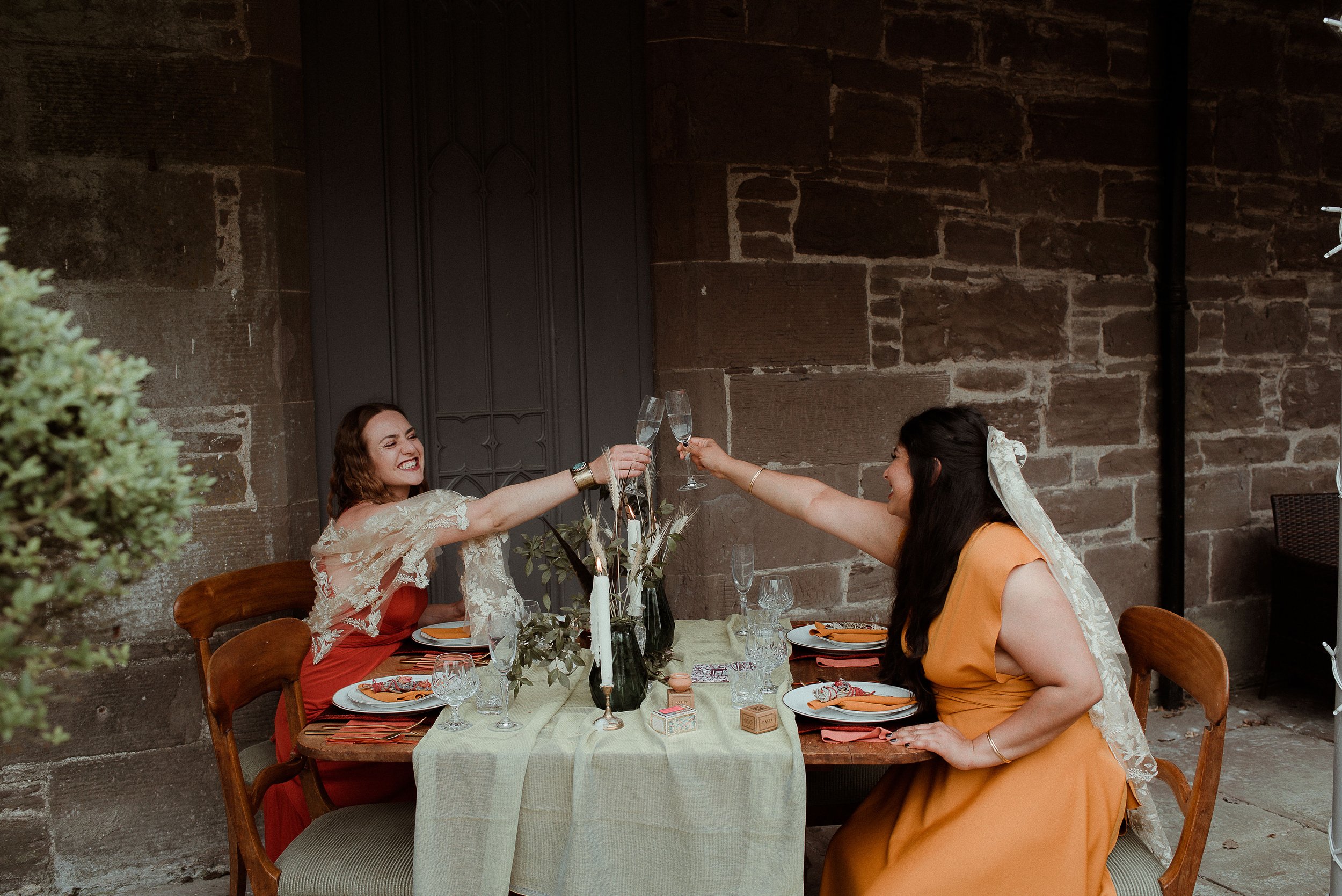Order of ceremony for a handfasting
This Nine Knot design in gold is a simple but stunning symbol of your love. Styled by Ceotha Muirhead at Culzean Castle, photographed by Andrea Costa
“It is such a happiness when good people get together—and they always do.”
I get a lot of questions about what a handfasting ceremony looks like, so over the next few posts I would like to set out some ideas that may inspire you. As always, I will begin with a disclaimer: handfasting as a tradition is very old – so old in fact that we don’t know exactly when it originated or where it came from. What we DO know is that there are traces of it all over the world. What this means is that there is no linear handfasting tradition with strict ‘dos’ and ‘donts’ to adhere to and this goes for any elements of the ceremony.
The cords I make are all inspired by the aesthetics and meaning of Celtic knots. One of the things I love most about Celtic culture is that the way meaning is created is never black and white but fluid and contextual. And this is exactly what I believe the most important rule is when it comes to the details of your handfasting ceremony: what matters most is what is meaningful to YOU and the story of your relationship. There will be some elements that remain constant: all stories have a setting, a beginning, a middle, and an end. But what these look like is different for everyone. Handfasting cords allow us to create a ritual of love that is special and unique to our relationship. If you are not sure about what to include, just listen to your heart. It’s your ceremony and your handfasting cord, after all. With that in mind, this post can hopefully give you some ideas.
What is handfasting?
Handfasting is a tradition from the British Isles that is deeply rooted in Celtic culture. I have written a longer post on this topic, but here it’s only important to note that it involves the joining of hands, and the knotting of a cord or ribbon around them, to formalise the bond between a couple. It may have originated as a form of trial marriage, but it is now used all over the world as a way to celebrate romantic partnership both within and outside traditional marriage. Often, a handfasting is performed by a celebrant, and you may want to take special care in choosing someone who understands what you envision for the ceremony. There are all kinds of reasons that you might prefer a handfasting in place of a wedding, and in future posts I’ll delve into some of these - above all, it’s simply a flexible, accessible, creative way of symbolising your bond.
The perfect cottagecore picnic wedding breakfast. Wedding favours by Lyne Organics and Social Stories. Styled by Ceotha Muirhead at Abercairny House, photographed by Kate Haag Photography
The setting
First thing’s first - handfasting can be incorporated into any kind of celebration, from a white church wedding with all the bells and whistles, to an elopement on a Scottish mountainside, to everything in between. It lends itself especially well to humanist ceremonies, where you may be looking for a ritual element to tie things together (so to speak) without necessarily invoking any particular spiritual beliefs. That said, it can easily sit alongside other religious and cultural traditions, and its Celtic origins mean it is a good fit for pagan or Wiccan ceremonies. Things you might want to consider about your wedding venue when planning a handfasting include: ways to involve nature in your nuptials (straightforward for a woodland or beach wedding but always possible in an urban setting too!); how to best arrange your guests so that they can view the cord-tying; and the kinds of objects you would like to surround yourselves with. There are more ideas and inspiration in this informative post by Moody Moons, and don’t forget to take a look at my Pinterest board too!
opening
A handfasting will often begin with a processional and some meaningful music, and then a welcome to the guests. much like any other wedding. The celebrant will usually say some words by way of explaining what a handfasting is and why it is meaningful to you and your partner.
This dazzling Magdalene Infinity cord in taupe/bronze and blue ribbon is studded with delicate pearls. Styled by Ceotha Muirhead at Culzean Castle, photographed by Andrea Costa
the ceremony
This is the part where truly anything goes! Here is a list of some ideas, but feel free to adapt them as you wish. I want to emphasise that these things can really happen in whatever order you prefer.
Meaningful readings, read by loved ones
Presentation of the handfasting cord
Handfasting ritual
Exchange of vows
Exchange of rings
Declaration of marriage
There are many opportunities here to involve loved ones in your ceremony - check out my post on this topic for more ideas! It is also worth noting that the handfasting and exchange of vows do not have to be separate, as vows can be ‘sealed’ into the handfasting cord with each knot. In my next post, I will delve into the wording of the vows, but my post on the history of handfasting also contains some inspiration.
An example of tying the knot with companion cords, as shown with my Thistle Bloom design. Styled by Ceotha Muirhead at Culzean Castle, photographed by Andrea Costa
Three cheers! Beeswax candles by Lyne Organics. Styled by Ceotha Muirhead at Abercairny House, photographed by Kate Haag Photography
closing
Like a traditional wedding, a handfasting may close with a recessional and music. You may also choose to follow your handfasting ritual with a traditional toast with “cake and ale” sipped from a quaich (a traditional Scottish two-handled vessel). Moody Moons even suggests beginning your ceremony with this toast, to get everyone in a celebratory mood!
For your recessional, jumping the broom may be an ideal send-off! And, in place of confetti, you may choose to have your guests shower you with fragrant herbs and flowers (I have more ideas pinned on my Sustainable Wedding Pinterest board).
There are so many ways to celebrate sustainably. Wedding favours by Lyne Organics and Social Stories. Styled by Ceotha Muirhead at Abercairny House, photographed by Kate Haag Photography
I hope you have found this post helpful. If you would like to work with me on designing your own custom handfasting cord to best integrate it into your ceremony, please don’t hesitate to get in touch :)
Love,
Ceo





